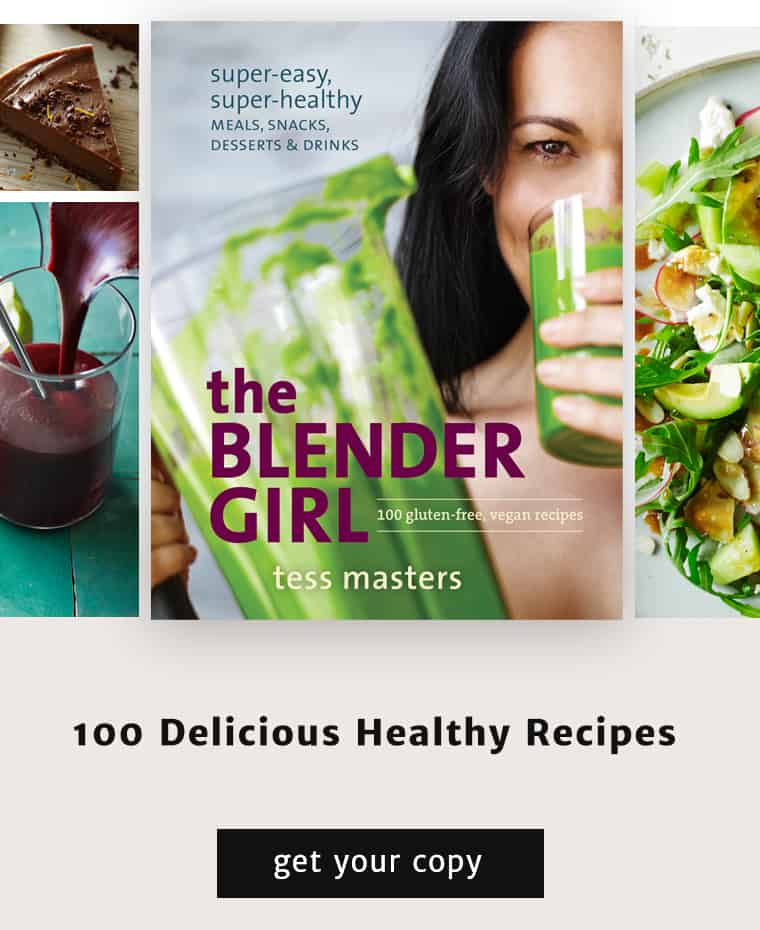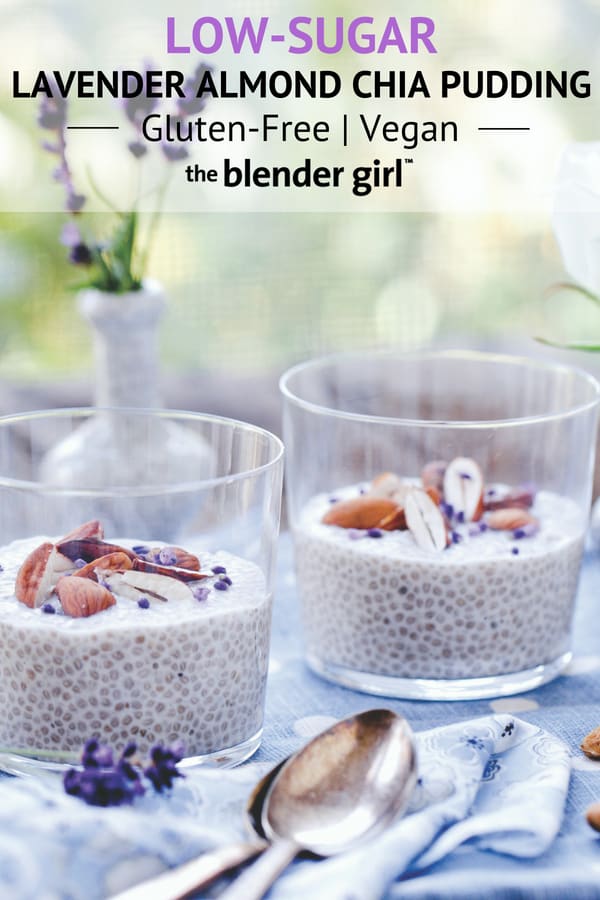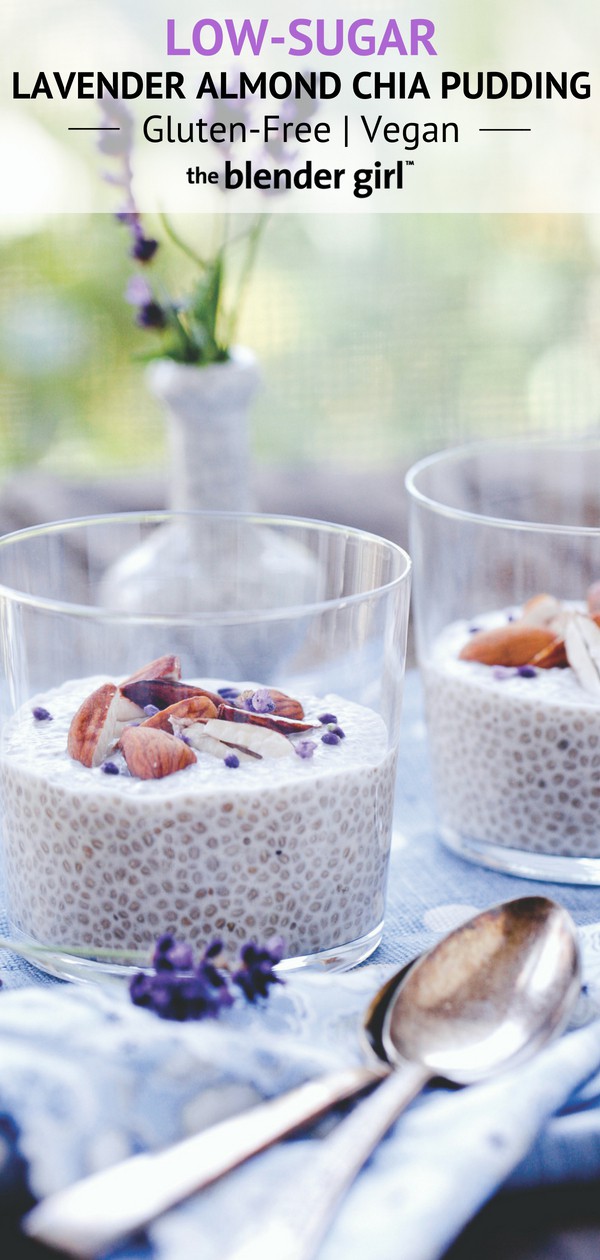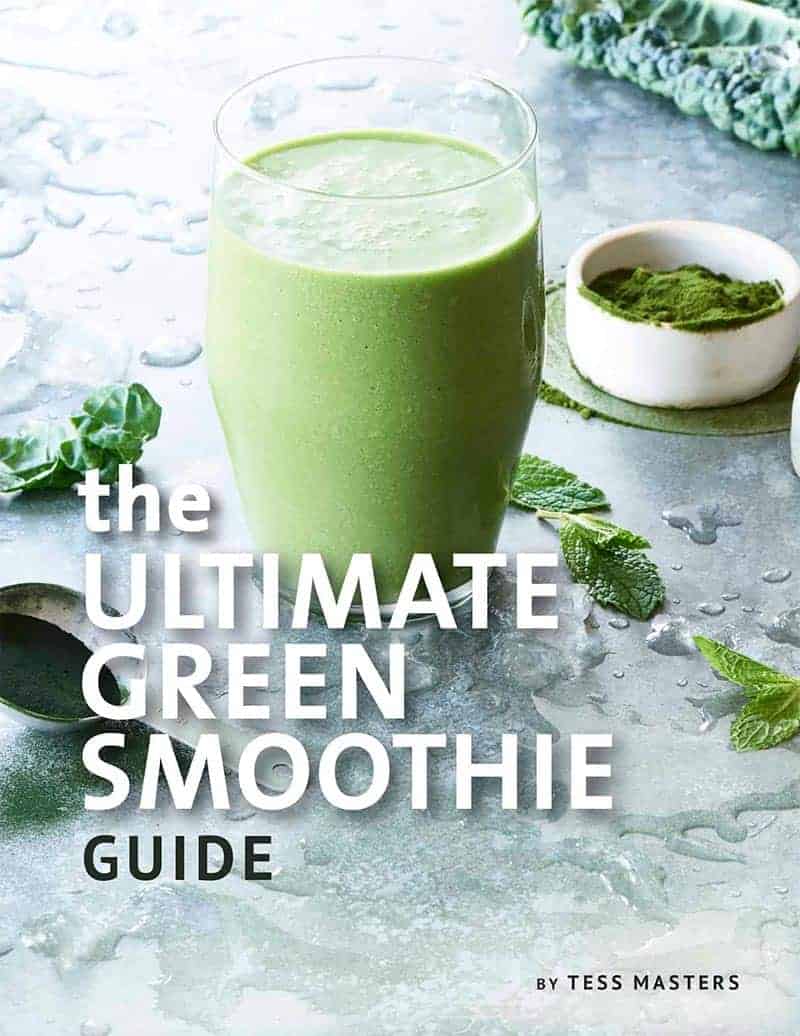Lavender Almond Chia Pudding
September 5, 2016
This lavender chia pudding is vegan and gluten-free, alkaline forming, and low in natural sugar. It’s also a beautiful color and has a delightful flavor.
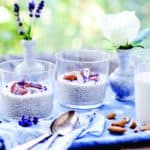
Lavender Almond Chia Pudding
This lavender chia pudding is vegan and gluten-free, alkaline forming, and low in natural sugar. It's also a beautiful color and has a delightful flavor.
Prep Time 15 minutes
Total Time 15 minutes
Servings 4
Ingredients
lavender almond milk:
- 1 cup raw almonds
- 3 cups filtered water
- 1/4 cup chopped pitted dates (or 5 drops alcohol-free liquid stevia)
- 1 teaspoon natural vanilla extract
- 3/4 teaspoon dried edible lavender
- Pinch of Celtic sea salt
chia pudding:
- lavender almond milk (recipe above)
- 1/2 cup + 1 tablespoon chia seeds
- 1/2 cup sliced raw almonds, to serve
Instructions
-
To soak the almonds, place the nuts in a glass or ceramic bowl or large glass jar, and cover with filtered water. Add 1 teaspoon Celtic sea salt and splash of fresh lemon juice or apple cider vinegar, cover the container with a breathable kitchen towel, and allow to soak at room temperature for 12 hours. (For more information on soaking read here.)
-
Drain, and discard the soaking liquid (do not use this to make the milk). Rinse the almonds several times to remove the anti-nutrients and enzyme inhibitors.
-
To soak the dates, place them in a glass or ceramic bowl, and cover with filtered water for 30 minutes, until softened. Drain, and set aside.
-
Throw the rinsed almonds, filtered water, dates, lavender, vanilla, and salt in your blender, and blast on high for 30 to 60 seconds, until the nuts are completely pulverized.
-
To strain, place a nut milk bag or knee-high piece of sheer nylon hosiery over the opening of a glass bowl, jar or jug. Pour the milk into the bag, twisting the bag closed, and gently squeezing it to pass the liquid through. Empty the almond pulp and set aside. You can dehydrate this for use in smoothies or to make crusts. Or make this quick easy body scrub.
-
To make the pudding, pour the milk in a large bowl, and whisk in the chia seeds for about 30 seconds to prevent them from clumping. Whisk again a couple of minutes later after the mixture settles to ensure the chia is evenly dispersed. Transfer the mixture to the fridge, and allow to thicken for 30 minutes.
-
Stir in the almonds, and transfer to four bowls to serve. Top with additional sliced almonds, if desired.
Recipe Notes
Recipe and photo from Eat Better, Live Better, Feel Better. Copyright © 2015 by Julie Cove. Published by Appetite by Random House, a division of Penguin Random House. Reproduced by arrangement with the Publisher. All rights reserved.



